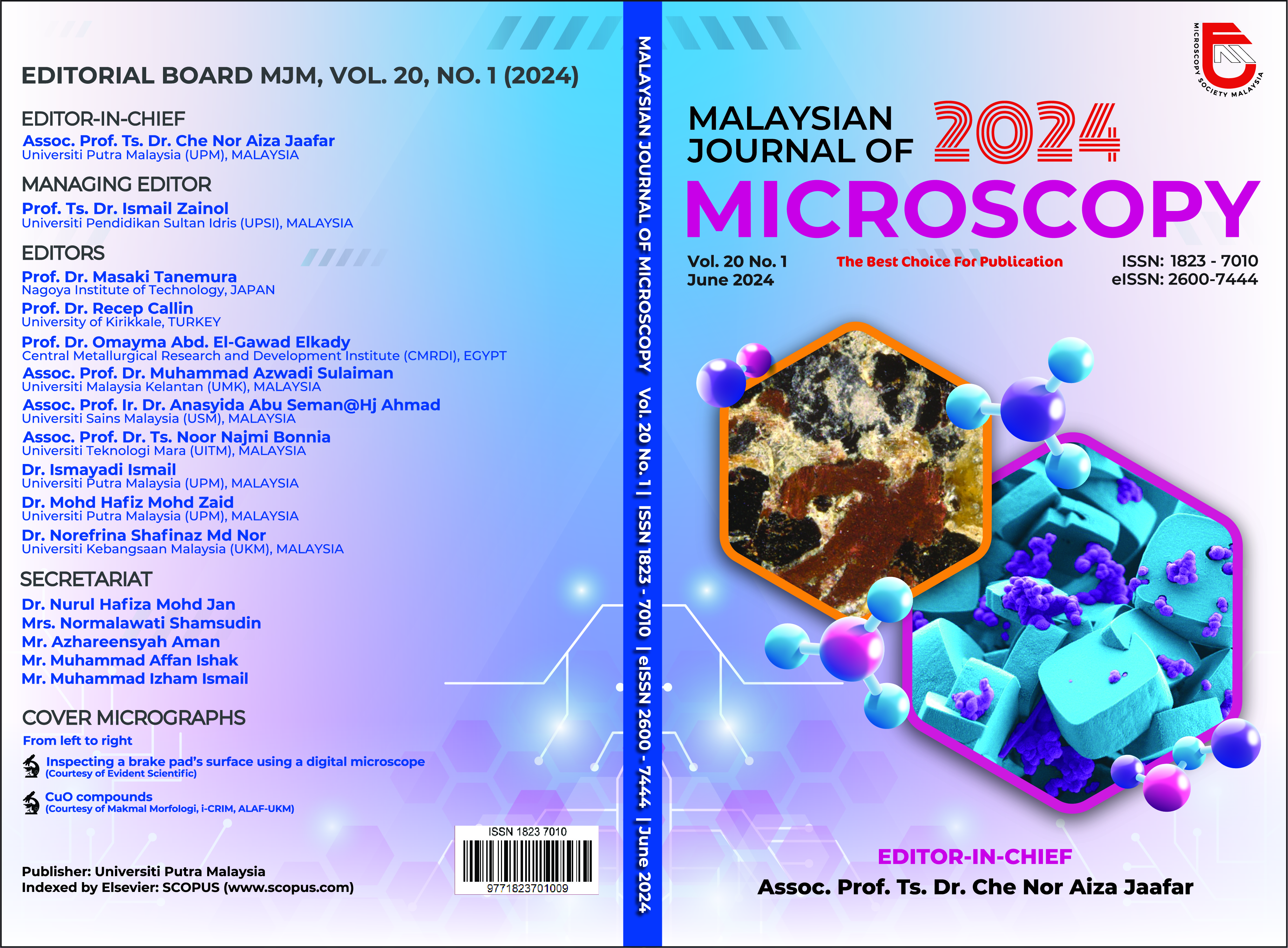MICROHARDNESS AND MICROSTURCTURE EVALUATION OF PREHEATED STEEL G550 THROUGH MICROWAVE HYBRID HEATING
Abstract
Microwave hybrid heating represents an innovative approach to preheating materials. Previous research has investigated the heat transfer of various metallic materials, including steel, copper, and aluminium. However, achieving high heat temperatures has been a challenge due to the limited power output of microwave sources used in heating techniques. In this study, steel G550 sheets (20 x 20 x 0.6 mm) were preheated using a novel microwave heating technique within a custom-designed mini heat chamber operating at a frequency of 2.45 GHz and microwave power ranging from 200 W to 700 W. The exposure time varied from 5 to 15 minutes. The heat chamber was appropriately positioned in a domestic microwave oven. Vickers microhardness measurements and X-ray diffraction (XRD) were analysed on the metal surface. The experimental findings showed the highest microhardness, 572 Hv at 700 W microwave power and heating time 15 minutes. The XRD spectrum detected formation of Fe5C2, Fe9S11, and Fe4Al13 presence on the steel’s surface after heating. Meanwhile, the smallest grain size, 3.6 µm was found for samples heated at 700 W power and heating time 5 minutes under rapid cooling. Higher power and heating time have damaged the samples and cannot be used for further heating. The study concludes that as the microwave power increased for preheating, the microhardness of the steel G550 had increased. This study on microwave hybrid heating for steel G550 sheets addresses a critical need in industrial material processing. By investigating the effects of varying microwave power and exposure times, the research offers insights into optimizing preheating techniques. The findings hold promise for enhancing efficiency and quality in manufacturing processes, fostering innovation and sustainability in industry.


